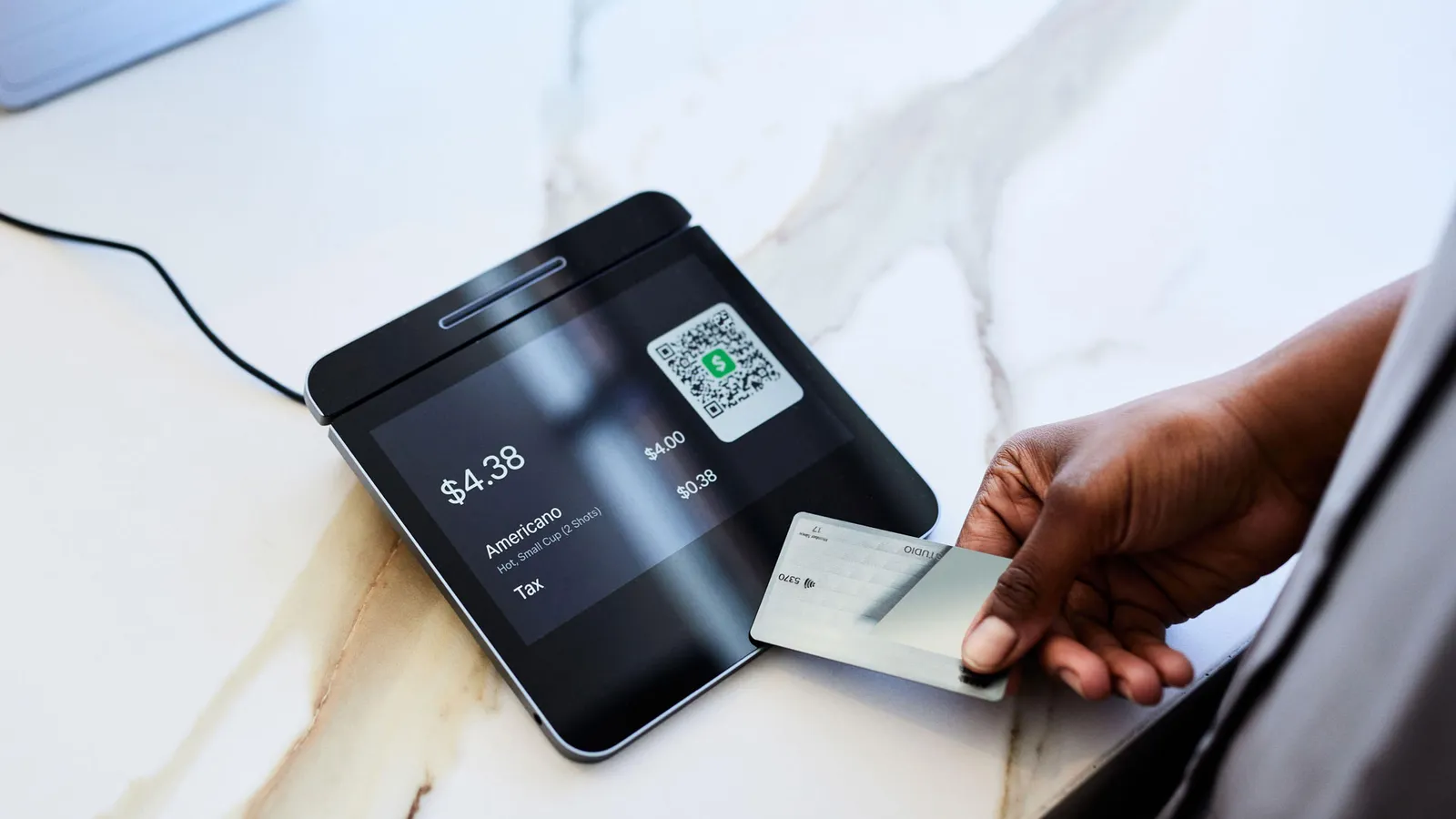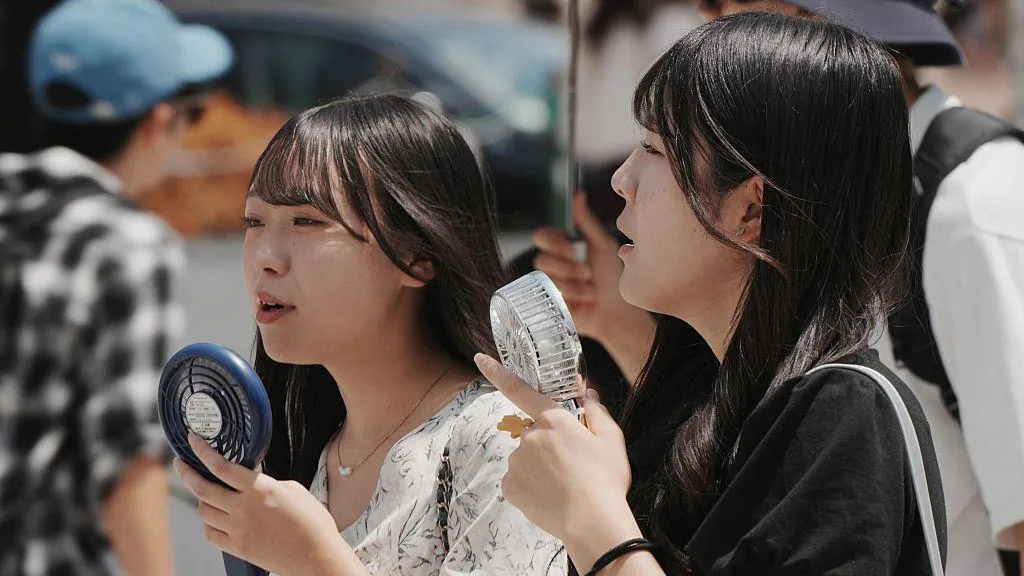The dark side of touch-screen tipping
In a world of card payments, the days of dropping coins into a tip jar are gone. On-screen digital options can sometimes increase gratuities, but at what cost?

It all started with an olive oil bundt cake. I was picking up a coffee at a local café after dropping off my daughter, when the cake caught my eye. It was pretty: sparingly iced with a light pink glaze and topped with a few delicate, edible flowers. I thought it'd be a nice surprise to bring home.
The barista boxed up the cake – $60 (£49), already far more than I'd wanted to pay – and swivelled the touch screen register so I could finish my transaction. I acted on autopilot, pressing the middle square to choose a 20% tip, and tapped my credit card to pay. It was only after the checkmark appeared on the screen – transaction successful! – I realised I'd tipped $18 (£15) for my morning latte, pastry and fancy baked good. I couldn't believe what I'd done.
As much as I blamed myself for the impulsive purchase, I couldn't help but curse the touch screen, too.
As card payments have risen in the US, tipping has also changed. While you'll still spot tip jars at local takeaway spots, many gratuities have gone digital, as point-of-sale (POS) systems almost always prompt customers to enter a tip before completing a purchase. Not only do patrons have to consciously decline – often under the watchful eyes of a worker – but the percentages are often higher than many people would select themselves. In a June 2023 Bankrate survey of nearly 2,500 Americans, 32% reported being "annoyed" by pre-entered tip amounts on touch screen payment systems.
But annoyance may only be the flowery pink icing atop the digital-gratuity cake. Although experts say the switch to digital tips is meant to generate more participation in tipping and higher overall take-home pay, there's a dark side to the technology. In many cases, consumers are feeling panicked to part with money they don't have, and service workers are finding their wages stagnating in a culture saturated by tips.
Changing behaviour
Touch screen POS systems are particularly prevalent at small businesses, including food service establishments: think bars and pubs, coffee shops and other takeaway spots. But they are also increasingly showing up as portable points of payment in sit-down restaurants.
If these payment set-ups seem like they became ubiquitous overnight, the sentiment isn't wrong. While many businesses were already moving toward tablet-based technology, the Covid-19 pandemic was a catalyst for even more employers to acquire touch screen systems, says Dipayan Biswas, a professor of marketing at the Muma College of Business at University of South Florida. Their mobility, ease of use and options for contact-free payment made them the perfect fit during the health crisis, especially as consumers were fearful about handling cash amid the virus.
However, says Biswas, the greatest driver of demand for the digital kiosks has become what payment processing companies refer to as their "smart tipping" functionality – allowing merchants to add a tip screen during a sales transaction, and choose which dollar amounts appear as choices for the consumer. "With a tablet," he says, "you have the ability to add more options during checkout and adding options like tipping creates more revenue."
Indeed, some survey data suggests people who do leave a gratuity on a touch screen tend to tip more than they would if they were, say, throwing coins into a jar at the till. Nearly two-thirds of 2,000 Americans polled in a 2023 Forbes Advisor study said they left at least 11% more when tipping digitally instead using of cash.
Tipping is already an emotionally charged issue, says Biswas. The topic is hotly debated – especially in the US, where low wages for service work often mean the expected percentage and frequency is higher than in other countries. But digital tipping has introduced another variable: consumers are being asked to tip in more places than they were before. Often, too, these may be higher than the 15% to 20% often seen as "standard" by many American patrons.
If a customer is presented with a screen that has four gratuity options – the first of which is 20%, and the last of which is "no tip" – they will often choose the first
Beyond being "annoying", as participants in the Bankrate survey noted, Biswas says the ubiquity of requests for gratuities has changed consumer psychology and behaviour.
Many customers default to what is known as the "anchoring effect", a cognitive bias in which consumers choose the first option with which they are presented. That option then becomes the default choice around which future decisions are made. So, if a customer is presented with a screen that has four gratuity options – the first of which is 20%, and the last of which is "no tip" – they will often choose the first. (Anecdotally, says Biswas, the option to skip the tip is presented last.)
The more consumers do this, the more the first option becomes their "anchor" for deciding how much they'll tip in the future, if at all. The higher the percentages, the more likely consumers will become conditioned to pay larger gratuities.
"If you change something, it becomes the norm," says Biswas. "A decade ago, airlines didn't charge for baggage. The public doesn't like it, but now they are used to it." He cautions that while the tip amounts, like airline fees, may feel small, these micropayments add up – and many companies won't be willing to forego the extra revenue the tipping prompts provide, so they are here to stay.
The guilt factor
Some of these tips are finding their way to workers as hoped; data from payroll-processing software Gusto showed some service workers are earning more in gratuities than before the pandemic. From March 2020 to May 2023, earnings from tips increased 42%.
However, Rachel Deal, the head of food and beverage communications for Square, says that, while there has been a "modest" increase in tipping, their company data points to a rise in base wages as a source of economic growth – not tipping alone. Square's data, which measures wages for service workers in 20 metro areas and is calculated using a restricted sample set of Square users, estimates the median base wage for retail and restaurant workers at $14.06 in September. (The Bureau of Labor statistics reports that the yearly average wage for food and beverage and related service employees is $13.52).
Still, says Biswas some businesses may be able to keep their base wages low with the promise that boundless tips will boost overall take-home pay. This has the potential to keep base wages down across these industries, he says – and if tipping is inconsistent, workers stand to lose wages they may have expected, even budgeted for.
And while many business owners pass on increased tipping revenue to their employees, say Biswas, there's no guarantee workers being paid an hourly wage will receive the entire share of money allotted as tips. This is known as "tip theft", and a 2023 ProPublica investigation found the issue is particularly rampant in the restaurant industry.
Touch screen POS systems, may also put negative pressure on consumers. Biswas says customers may feel guilted into tipping, even when they don't want to or feel they need to (for instance, at a self-service establishment where they never interacted with a staff member, yet are still prompted to leave a gratuity). Since many of these digital POS machines set a tip as the default, "you have to actively opt out of tipping – you have to say 'no', which can create a great deal of guilt", he says. Often, a server watches when patrons select tips, too, which can increase pressure.
Biswas explains that the guilt factor can be particularly difficult for those on a restricted budget or for marginalised populations who are looking to fit into social norms. They may feel they have to spend more for goods, even it puts their financial security at risk. "We all have budgetary restraints and should not tip out of guilt," says Biswas. "Business should consider the long-term social consequences of touch screen payment systems and tipping prompts."
And while some patrons feel guilt-tripped into parting with their money, others are tipping less since the rise of the machines – many feel tipping has gotten out of control, leading to "tipflation". The Bankrate data noted fewer people at sit-down restaurants reported tipping in 2022 than they did in 2021; 66% of the respondents said they have a negative view of tipping.
Additionally, the group reported confusion about when to tip and how much. As tips have crept into industries that haven't traditionally relied on them, patrons are experiencing a lack of clarity on whether to tip for simple services like purchasing a ready-made sandwich or cup of coffee, or for assistance in a retail shop.
This confusion and inconsistency problem cycles back to the hourly workers, for whom the benefits of tipping are already murky. In the US, restaurant workers are paid far below minimum wage ($2.13 [£1.75] is the federal base amount for tipped employees), with the implicit agreement between patrons and employers that tips will make up most of their earnings. If tipping declines when people feel annoyed, resentful or confused, workers bear the brunt.
-bbc







